When it comes to the Edge Computing, there are a multitude of use cases. Most require limited compute or storage; so, other products such as OnLogic can fulfill the necessary requirements. But sometimes, there are massive requirements that push edge devices beyond there limits. As we learned at Edge Field Day 3, that is where TSecond enters the marketplace and shines.
Movie Industry Edge
One such industry that has both the capital and needs at the edge is the entertainment industry. Movie producers process petabytes of video and audio captured at a site. That video and audio need to me analyzed and verified so edits and cuts can be reshot onsite saving millions.
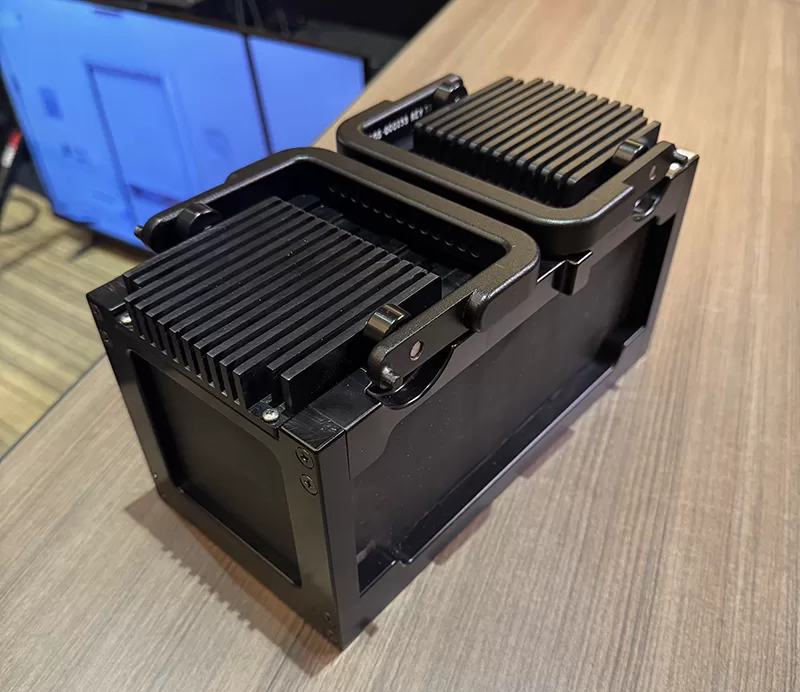
TSecond is on another level when it comes to processing at the edge for these movie studios. They produce a product that contains up to 62 high speed M.2 SSD cards totaling up to petabytes of storage in an enclosed secured case that looks like a black brick. With their shelf unit, you can connect multiple Brycks together to form a high capacity, high speed, edge storage processing nightmare. Anyone producing movies, slobber over this device.
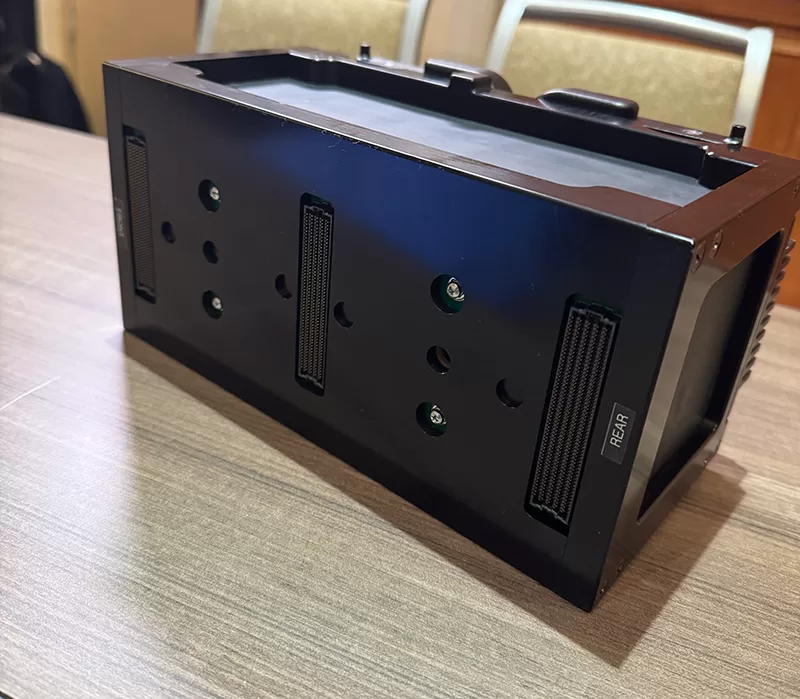
Just look at the lanes needed to pass this much data per second. This is why they need a shelf to handle amounts of data. Additionally, there is no compute at these devices. These are built to bring storage as close as possible to the edge compute that happens on different servers.
Storage At The Edge
Let’s explore how this Bryck fits the Edge use case compared to the others at EFD3. Movie studios have massive amounts of data that need processed near where it is captured. Check for the edge.
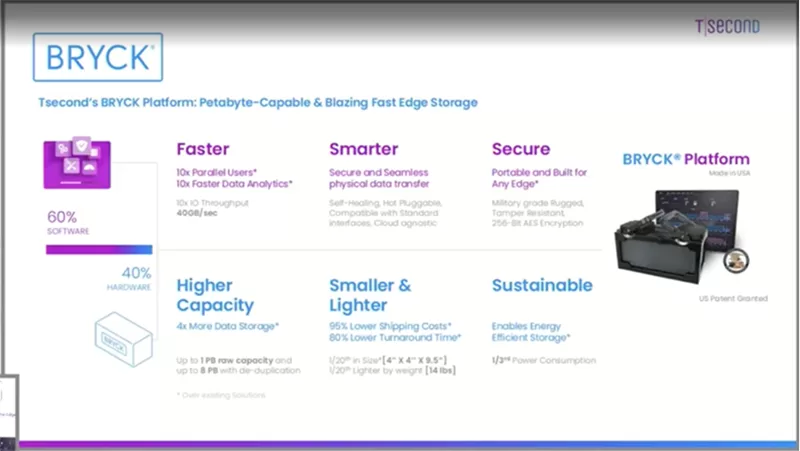
Also, that video content is top secret. There are whole industries built to leak upcoming movies tidbits and clips. A device that sits at the edge is susceptible to thieves looking to leak anything they can get their hands on. When we say rugged, Bryck is a step above. Just picking up a Bryck gives you a dumbbell workout worthy of a gym membership. They say that attempting to penetrate the device will destroy the components inside. Good luck accessing the individual SSD cards inside. Then using encryption, there is no compute on the Bryck to decrypt the data, there is little chance of extracting data from these beasts.
TSecond mentioned several industries where the Bryck could be useful outside the Movie industry.
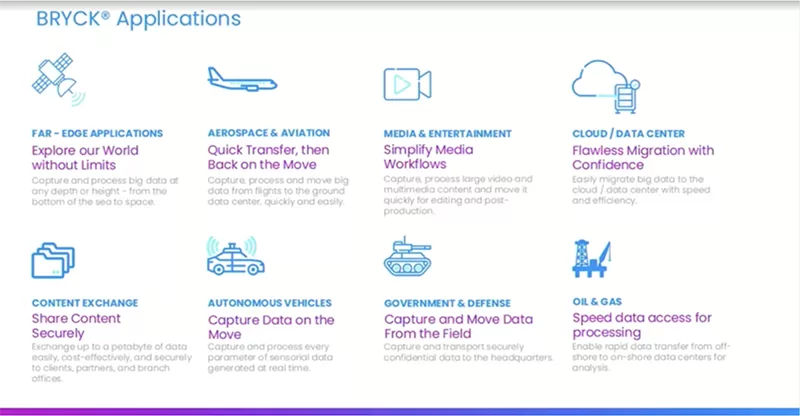
Sometimes when it comes to large amounts of data, never underestimate the bandwidth of a station wagon full of tapes hurtling down the highway.
Are These Brycks Made of Gold?
If you need data storage at the edge on the levels of TSecond, you had better have a deep pocket book. That is the one thing holding back the Bryck from deeper penetration into edge cases. Starting in the millions, you better be ready to roll out plenty of cash if you want a full decked out TSecond Bryck.

To compensate and reach the smaller markets, TSecond have downsized to the Bryck Mini. While not quite as capable, this device is much more affordable for edge use cases that still need high speed storage at the edge, just on a smaller scale.
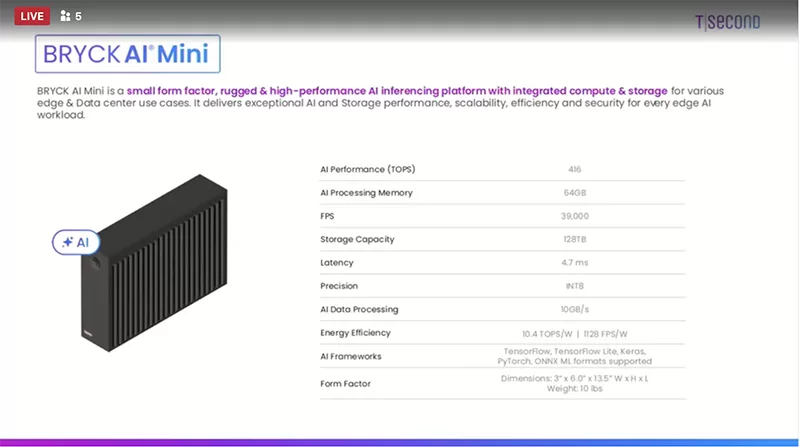
Bryck AI
Lastly, with the advent of Artificial Intelligence, TSecond recognized that their devices could solve some of the issues with deploying AI at the edge. Sacrificing some of the storage, TSecond added AI Processors to the brick to help keep that data flowing at the edge. These are not built for training AI models at the edge, but providing AI Inferencing at the edge. This can bring the latency to almost zero having it processed at the edge.
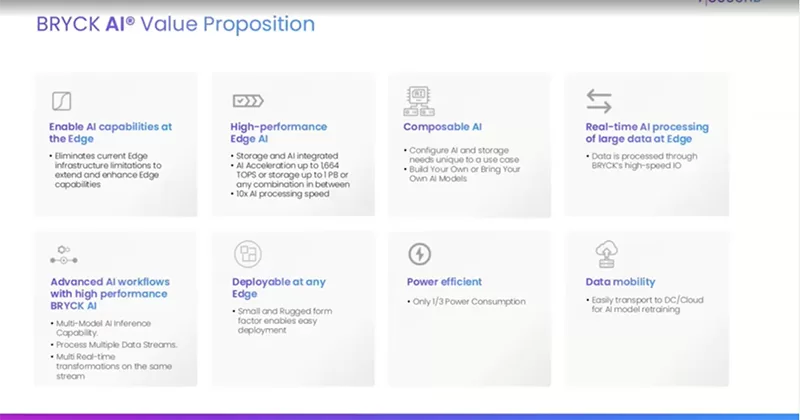
TSecond Bryck is the Cybertruck of the Edge
Ultimately, the TSecond Bryck knows where it fits and that is a pretty limited subset of edge use cases. But where it is needed, it absolutely shines as one of the best solutions for providing storage and AI inferencing at the edge. That reminds me of the cult Tesla Cybertruck taking the highways by storm.

Never underestimate the bandwidth of a Cybertruck full of TSecond Brycks hurtling down the highway.

